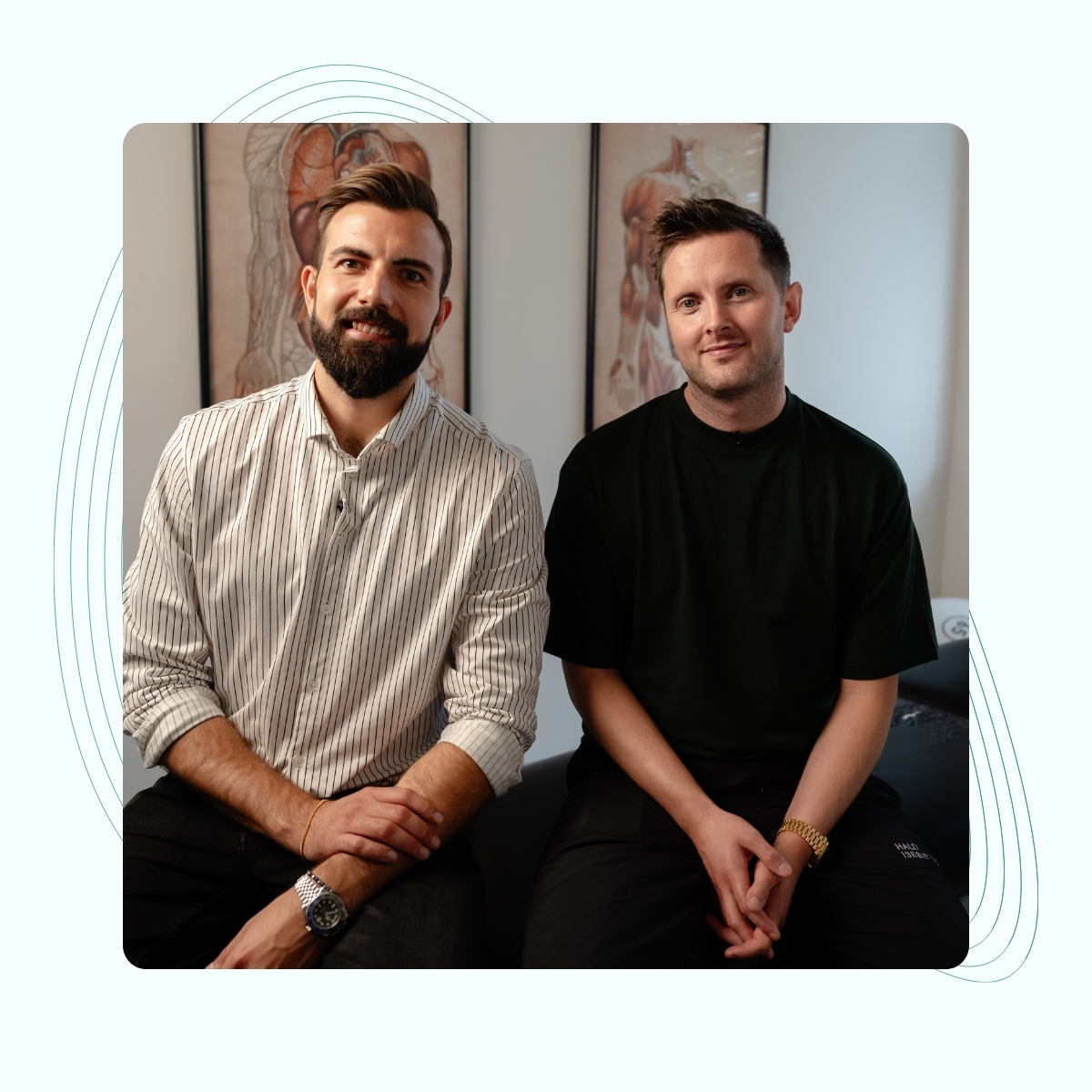We treat
Back strain
Learn more about back strain and its complications
What is back strain?
Back strain is a common condition that occurs when the muscles in the back become overstretched, stretched, or pulled in a way that causes pain and discomfort in the back.
Back strain? Book an appointment.
Jump to section [Vis]
Symptoms of back strain
Symptoms of a back strain can vary from person to person, but may include back pain or tenderness, decreased range of motion or stiffness, muscle spasms, numbness or tingling in the legs, or difficulty standing upright. It is always a good idea to consult a doctor if you experience persistent pain or symptoms that do not improve after a few weeks.
Source: netdoktor.dk & sundhed.dk

How long does back strain last?
The duration of back strain can vary from person to person, depending on factors such as the cause of the condition and the severity of the symptoms. Generally speaking, most cases of back strain will improve within a few days to weeks.
Causes of back strain
Back strain can be caused by many different factors, including poor posture, repetitive movements, a sedentary lifestyle, too much strain or stress on the back, or a previous injury.
If your back strain is caused by a more serious condition, such as a herniated disc or spinal stenosis, it may take longer to recover and additional treatment may be necessary. It is always a good idea to consult a doctor if you experience persistent pain or symptoms that do not improve after a few weeks.
Source: netdoktor.dk and blackroll.com and netdoktor.dk

Strain in the upper back
Upper back strain can be caused by a variety of factors, including poor posture, repetitive movements, stress, strain or tension in the neck and shoulders, and in rare cases, a previous injury or a degenerative condition of the spine.
Mid-back strains occur when the muscles in the middle area of the back become overstretched, stretched, or pulled in a way that causes pain and discomfort.
Symptoms of upper back strain may include pain, stiffness, and discomfort in the area between the shoulder blades and along the spine, and may also be accompanied by headaches or neck pain. These symptoms may be worsened by activities that involve upper body movement or by sitting or standing in one position for a long time.
Back strain due to facet joint syndrome
Facet joint syndrome can be one of the causes of back pain. Osteopathy can treat facet joint syndrome by identifying and treating the underlying causes of the pain.
Acute back strain
Acute back strain is a sudden and intense pain in the back that can make it difficult to move or perform daily activities. It is important to remember that although acute back strain can be very painful, most cases of acute back strain will improve within a few days to weeks. It is also important to avoid overexerting the back and to avoid repetitive movements or positions that can worsen the symptoms.
It is always a good idea to consult a doctor if you experience persistent pain or symptoms that do not improve after a few weeks.

What should you do if you have back strain?
To speed up the healing process and relieve pain, it may be a good idea to keep your back rested and avoid heavy lifting or repetitive movements that can aggravate the condition. Heat or cold therapy and light stretching exercises can also help reduce pain and tenderness.
Source: netdoktor.dk
Treatment of back strain
There are several ways to relieve a back strain, depending on the cause of your condition. Here are some general tips that can help relieve pain and improve mobility in your back:
- Rest: For the first few days after your back is fixed, it may be a good idea to take it easy and avoid physical activity that could aggravate the pain. However, this does not mean you should be inactive. It is important to move a little every day to avoid stiffness in your back.
- Painkillers: Painkillers, such as ibuprofen and paracetamol, can relieve pain and make it easier for you to move around. Talk to your doctor about which medication is best for you.
- Heat and cold therapy: Using heat and cold therapy can relieve pain and reduce inflammation. A heating pad, warm baths, or a hot compress can help relieve pain. Cold can be used to reduce inflammation. You can use an ice pack or a cold compress for 20 minutes at a time.
- Massage: A massage of the back muscles can help loosen up the muscles and relieve pain.
- Exercises: Specific exercises can help strengthen your back muscles and improve your mobility. Your doctor or a physical therapist can recommend exercises that are appropriate for your condition.
- Osteopathy or chiropractic: Osteopathy or chiropractic can help relieve pain and improve mobility in the back.
Source: sundhed.dk

Osteopathy and back strain
Osteopathy can be an effective treatment for back pain. Osteopathy focuses on identifying and treating problems in the body’s structures and functions. Osteopaths work with a variety of techniques that can help reduce pain and increase mobility in the back.
Osteopaths will typically start by conducting a thorough examination of the patient’s back and posture to identify any problems or imbalances. They will then use various techniques such as manipulation, massage, stretching exercises, and joint mobilization to treat the problem areas and restore normal function to the back.
Osteopathic treatment may also include advice on lifestyle changes and exercises to strengthen the muscles of the back and improve posture.
Source: my.clevelandclinic.org and my.clevelandclinic.org
Back strain and unable to walk
If you experience back pain and are unable to walk, it may be a sign of a more serious condition, and it is important to seek emergency medical attention.
Back strain can cause pain and stiffness, but you can usually still move around, although it may be painful. If you experience sudden severe pain and are unable to walk, it could be a sign of a herniated disc, spinal stenosis, or another serious condition that requires immediate medical attention.
In such cases, your doctor or healthcare professional may recommend pain medication, injections, or even surgery to relieve the pain and allow you to resume your normal function. They may also refer you to a physical therapist to help restore mobility and strength to your back.
It is important to get an accurate diagnosis and treatment from a doctor or healthcare professional if you are experiencing severe pain and are unable to walk due to back pain. Ignoring these symptoms can lead to serious long-term back problems.

Back strain and sick leave
Back strain is a common reason for sick leave, especially if it is severe and affects your ability to perform your daily activities or work. Sick leave due to back pain can vary in duration depending on the severity of your symptoms and the treatment required.
If you have an office job, you may be able to work from home for a period of time, if possible and your doctor or employer agrees. If your job requires physical work, you may need to take sick leave until you are able to perform your work duties again.
Source: sundhed.dk
How can you sleep with back strain?
Sleeping with back strain can be a challenge as it can be difficult to find a comfortable position and avoid pain. Here are some tips for sleeping with back strain:
- Provide good support: Use a firm mattress and a pillow that provides good support for your neck. A pillow between your knees can also help keep your spine in a neutral position and relieve pain.
- Choose the right sleeping position: It is important to find a sleeping position that does not aggravate the pain. For some people, sleeping on their back with a pillow under their knees may be best. For others, sleeping on their side with a pillow between their knees may be more comfortable.
- Avoid sleeping on your stomach: Sleeping on your stomach can put unnecessary pressure on your back and worsen the pain.
- Use heat: A heating pad or warm compress can help relieve pain and make it easier to fall asleep.
- Take pain medication: If you have trouble falling asleep due to pain, you may want to consider taking pain medication. Talk to your doctor about the best medication for your condition.
- Try to relax: Stress and tension can make pain worse. Try to relax with meditation, deep breathing, or other relaxation techniques.
Remember that it is important to talk to your doctor or a healthcare professional about the best way to manage back pain, including how to get the best sleep possible.

Often related injuries
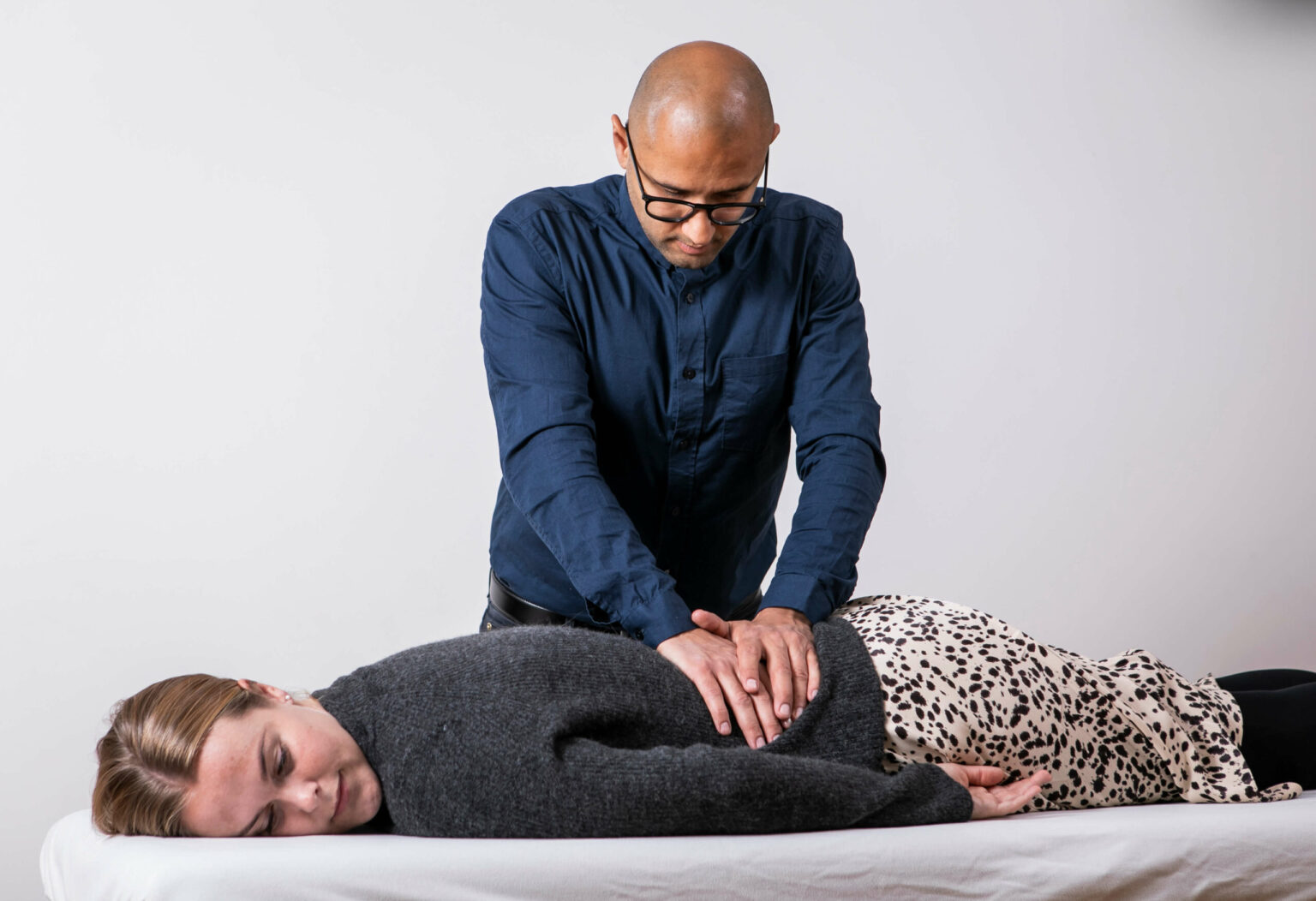
Spinal stenosis

Hypermobility in babies and children

Muscle tension or imbalances in babies and children
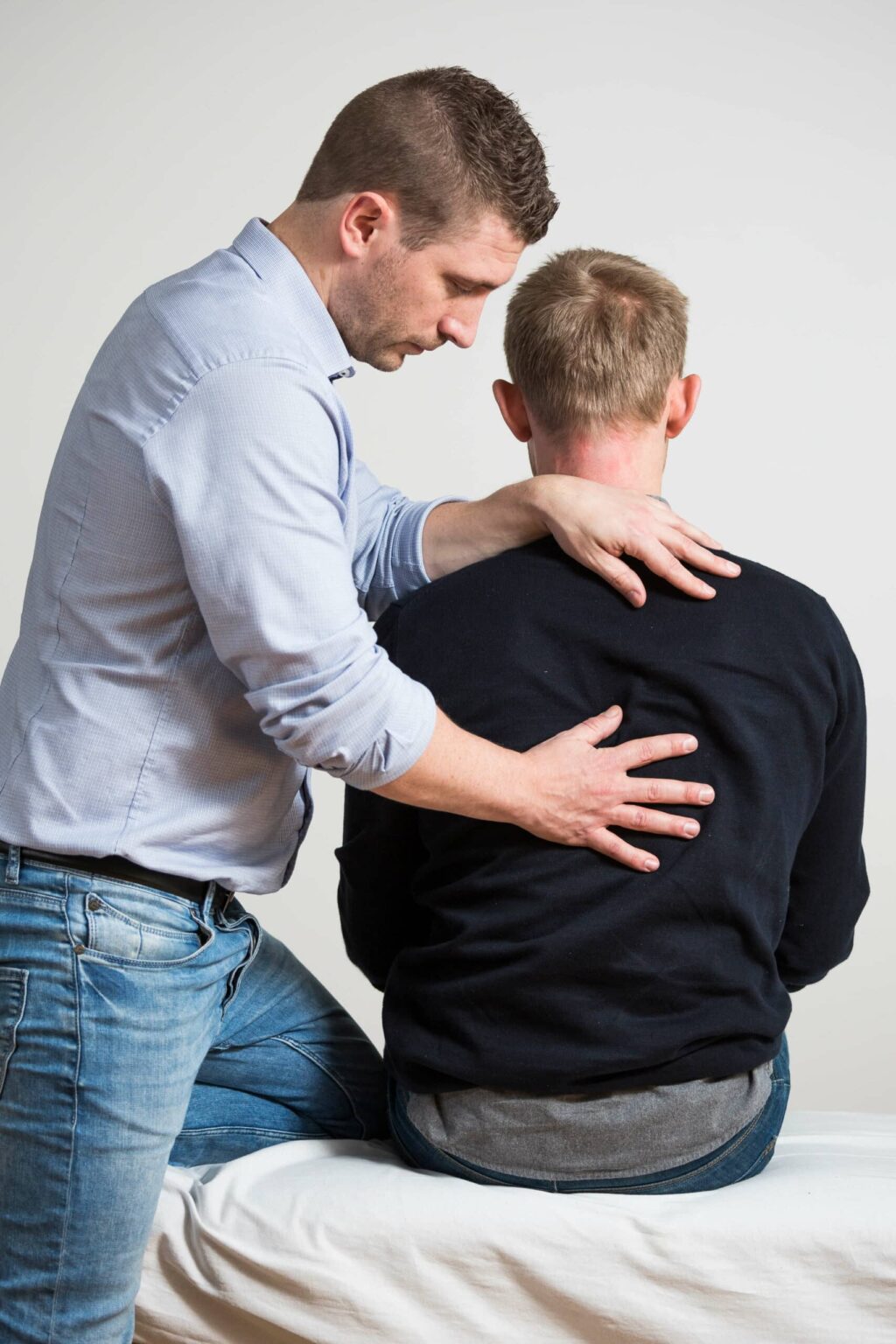
Modic Changes
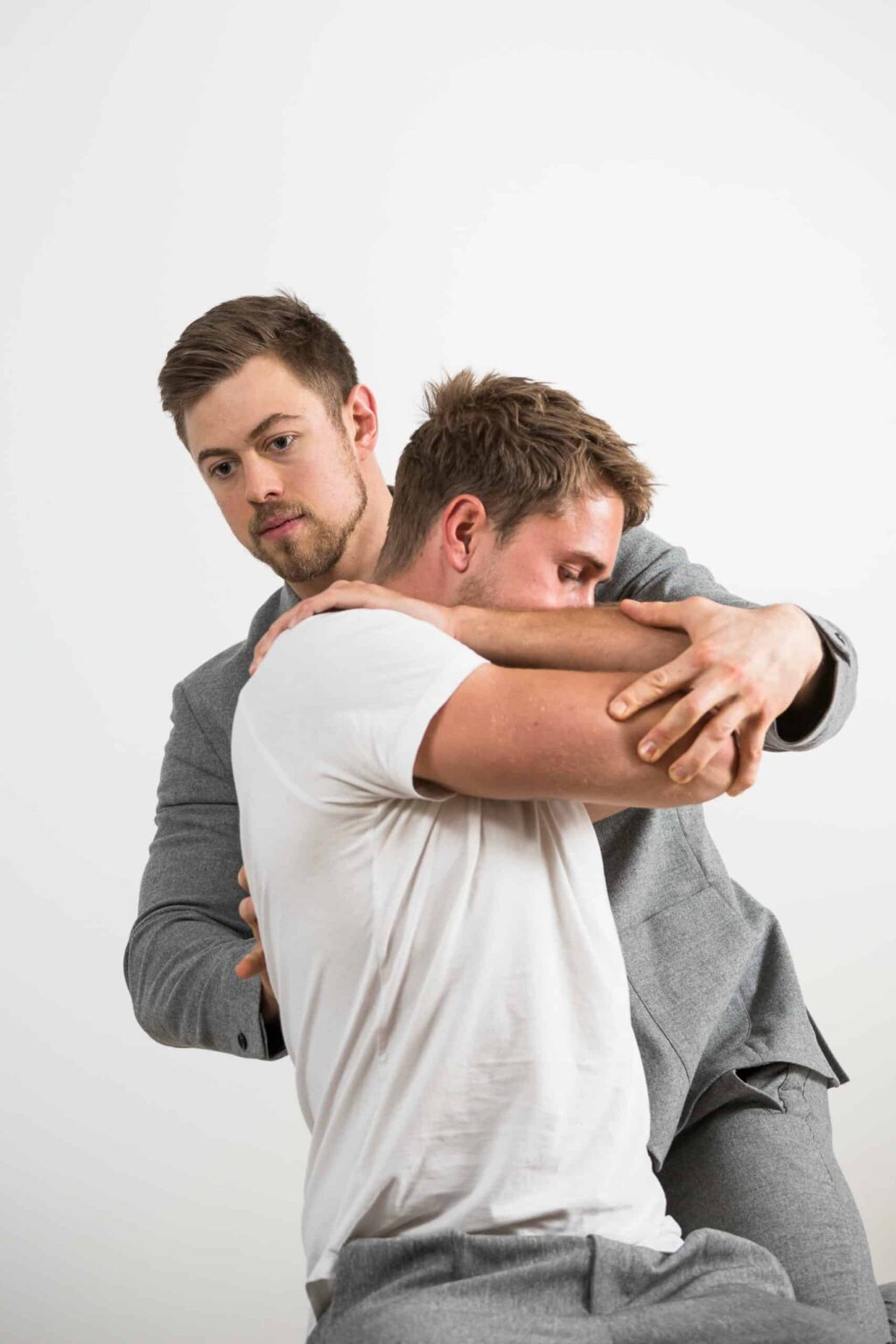
Disc herniation
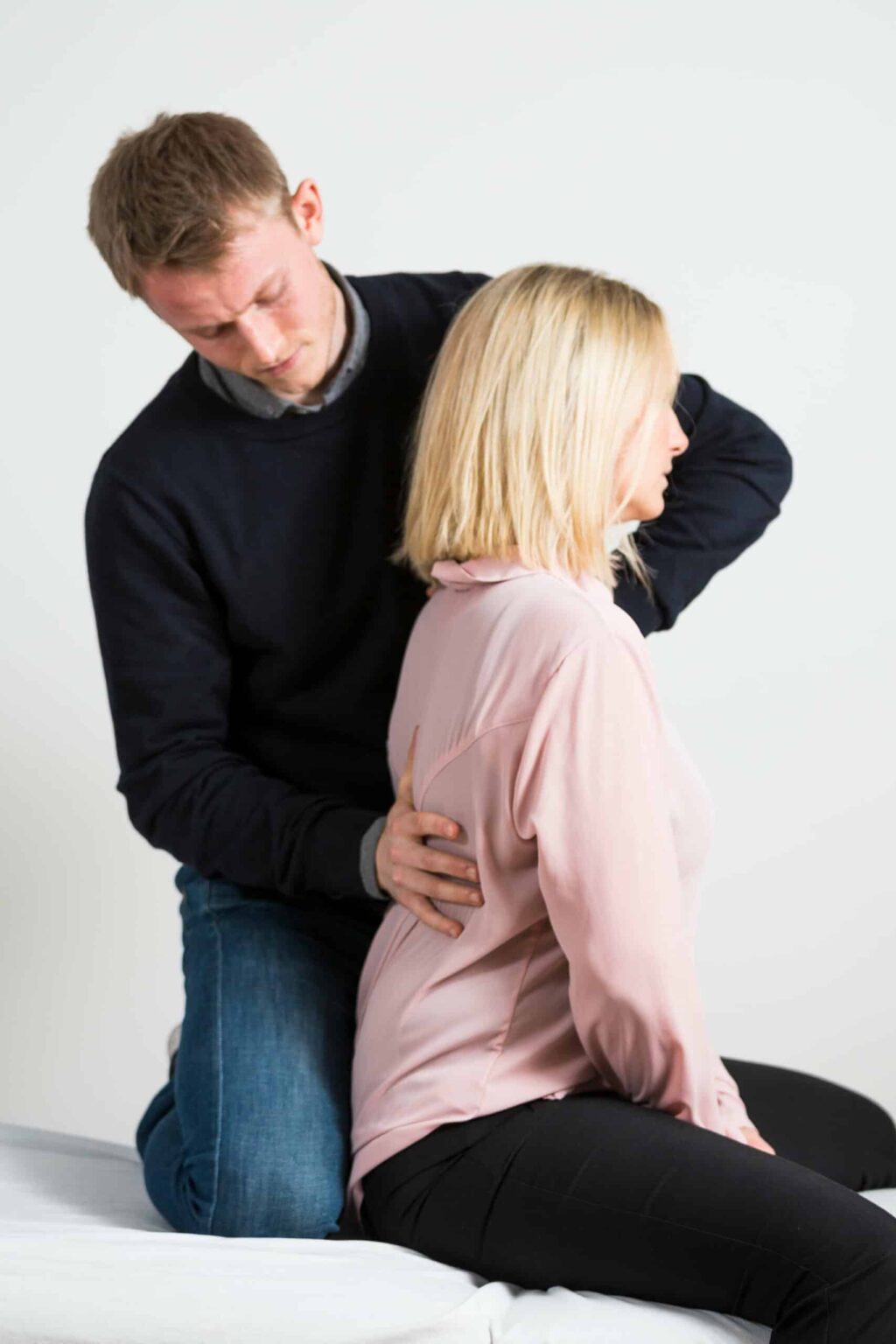
Spinal arthritis
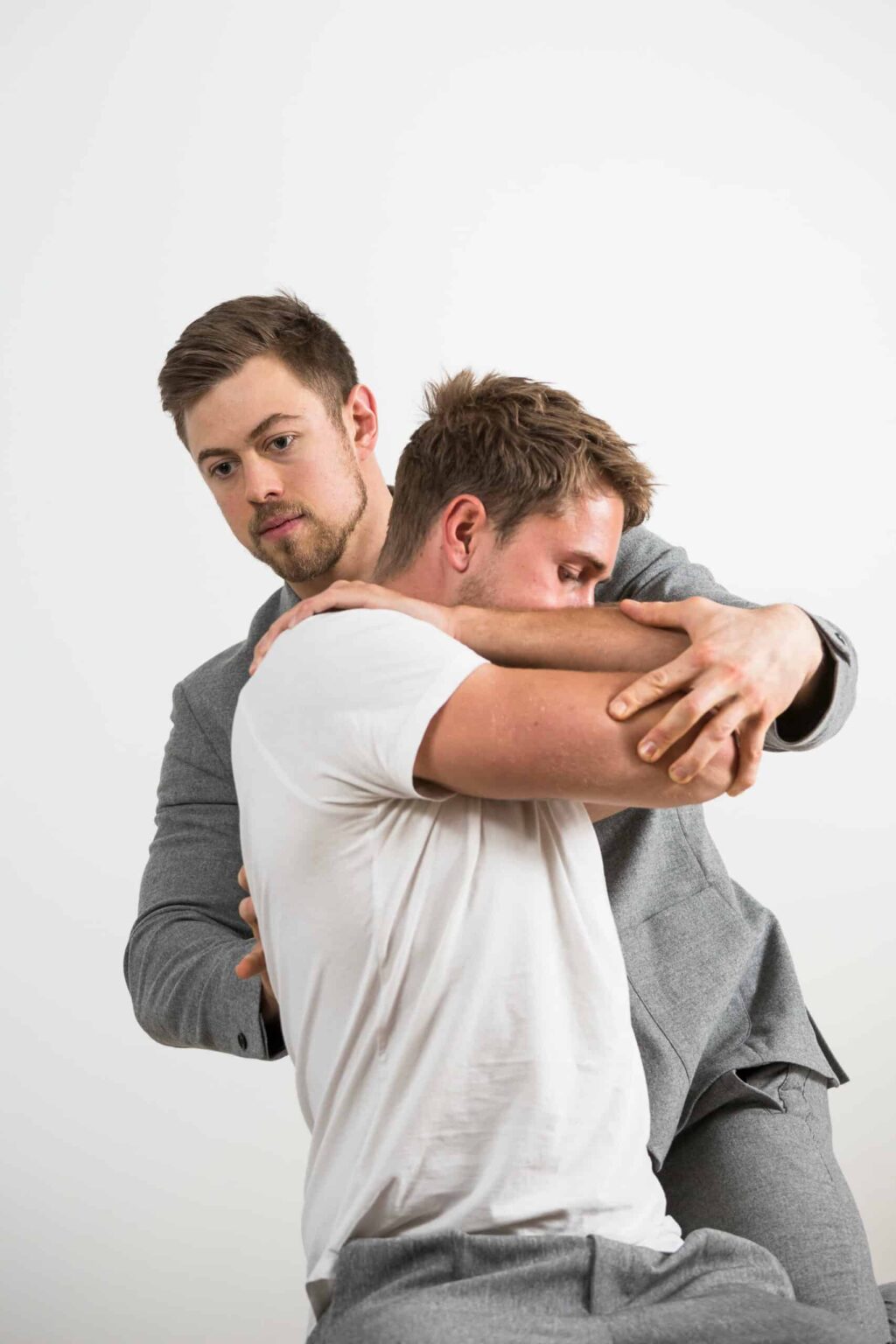
Winged scapula

